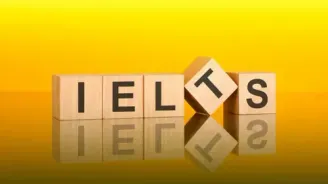A Disaster of Titanic Proportions Reading Passage
A Disaster of Titanic Proportions Reading Passage
Paragraph A
Lookouts Frederick Fleet and Reginald Lee on the Titanic's front mast spotted an eerie, black mass approaching into view immediately in front of the ship at 11:39 p.m. on Sunday, April 14, 1912. "Iceberg, right ahead!" Fleet exclaimed as he picked up the phone at the helm and waited for Sixth Officer Moody to answer. The worst maritime calamity in history was about to be set in motion.
Paragraph B
The Titanic struck a piece of submerged ice 37 seconds later, shattering rivets in the ship's hull and filling the first five watertight compartments, despite the attempts of personnel in the bridge and engine room to manoeuvre around the iceberg. Thomas Andrews, the ship's designer, conducted a visual survey of the ship's damage at midnight and warned Captain Smith that the ship would sink in less than two hours.
After Smith had given the order for the lifeboats to be opened and swung out 15 minutes earlier, the lifeboats were being loaded with women and children by 12:30 a.m. Only 28 of the 65 seats in the first lifeboat were occupied when it was successfully lowered 15 minutes later. The waterline was beginning to reach the Titanic's name on the ship's bow by 1:15 a.m., and every lifeboat would be released over the next hour as commanders tried to maintain discipline amid the mounting fear on board.
Paragraph C
The dosing moments of the Titanic's sinking occurred shortly after 2:00 a.m. when the last lifeboat was lowered, and the ship's propellers were taken out of the water, leaving 1,500 passengers to surge towards the ship's stern. Harold Bride and Jack Philips sent their final wireless message at 2:17 a.m. after being relieved of their duties as the ship's wireless operators and the ship's band ceased performing. Less than a minute later, lifeboat occupants saw the ship's lights flash once, then go out, and heard a tremendous roar that indicated the Titanic's cargo was diving towards the bow, causing the front half of the ship to break off and sink. The bow of the Titanic briefly rose, and at 2:20 a.m., the ship finally sank beneath the frigid waters.
Paragraph D
What or who was responsible for the magnitude of the catastrophic event? There are numerous explanations, some of which focus on minute minutiae. Because of a last-minute change in the ship's officer line-up, iceberg lookouts Frederick Fleet and Reginald Lee were forced to make do without a pair of binoculars that an officer transferred off the ship at Southampton had left in a cupboard onboard, unbeknownst to any of the ship's crew. Fleet, who survived the sinking, claimed at a subsequent investigation that if he had owned the binoculars, he could have discovered the iceberg in time to avert disaster.
Paragraph E
Less than an hour before the Titanic collided with the iceberg, wireless operator Cyril Evans in California, about 20 miles to the north, attempted to reach Titanic operator Jack Phillips to warn him of the approaching pack ice. Phillips responded, "Shut up, shut up, you're jamming my signal." "I'm occupied." Philips was clearing a backlog of personal messages that passengers had requested to be transmitted to family and friends in the United States after the Titanic's wireless system had gone down for several hours earlier that day.
Despite several warnings of ice ahead, Captain Smith kept the ship moving at 22 knots. Although it has been alleged that Smith was under pressure to make headlines by landing early in New York, maritime historians such as Richard Howell have refuted this notion by pointing out that Smith was just adhering to the standard procedure at the time and was not acting irresponsibly.
Paragraph F
The Titanic did not have enough lifeboats for everyone on board, which is one of the most compelling explanations for the massive loss of life. Maritime regulations at the time considered that the lifeboat capacity was determined by the size of the ship, not the number of passengers on board. This meant that with space for 1,178 of its 2,222 passengers, the Titanic actually exceeded the Board of Trade's requirement that it carry lifeboats for 1,060 passengers.
Paragraph G
Despite the fact that lifeboats were lowered with less than half full in many situations, and only 712 passengers survived despite a two-and-a-half-hour window of chance, more lifeboats would not have ensured more survivors in the absence of improved training and planning. After the order to launch lifeboats was given, many passengers were puzzled about where to go; a lifeboat drill that had been scheduled for earlier on the same day the Titanic struck the iceberg was cancelled by Captain Smith to allow passengers to attend church.
Also Read: IELTS Reading Tips & Tricks
A Disaster of Titanic Proportions Reading Questions and Answers
Discover exciting and informative IELTS reading answers about A Disaster of Titanic Proportions






